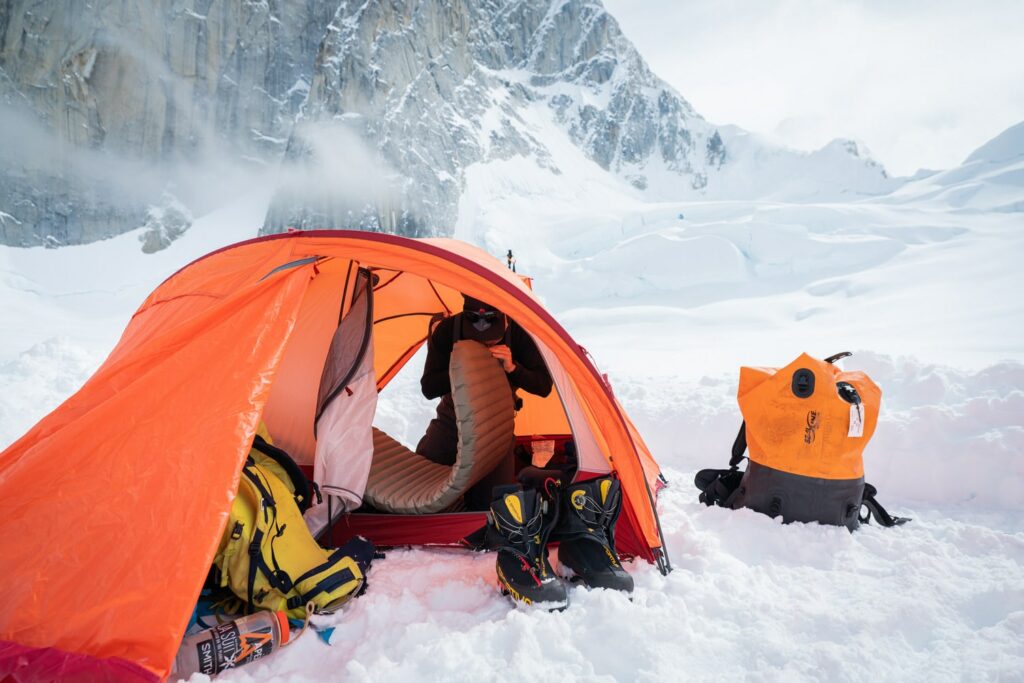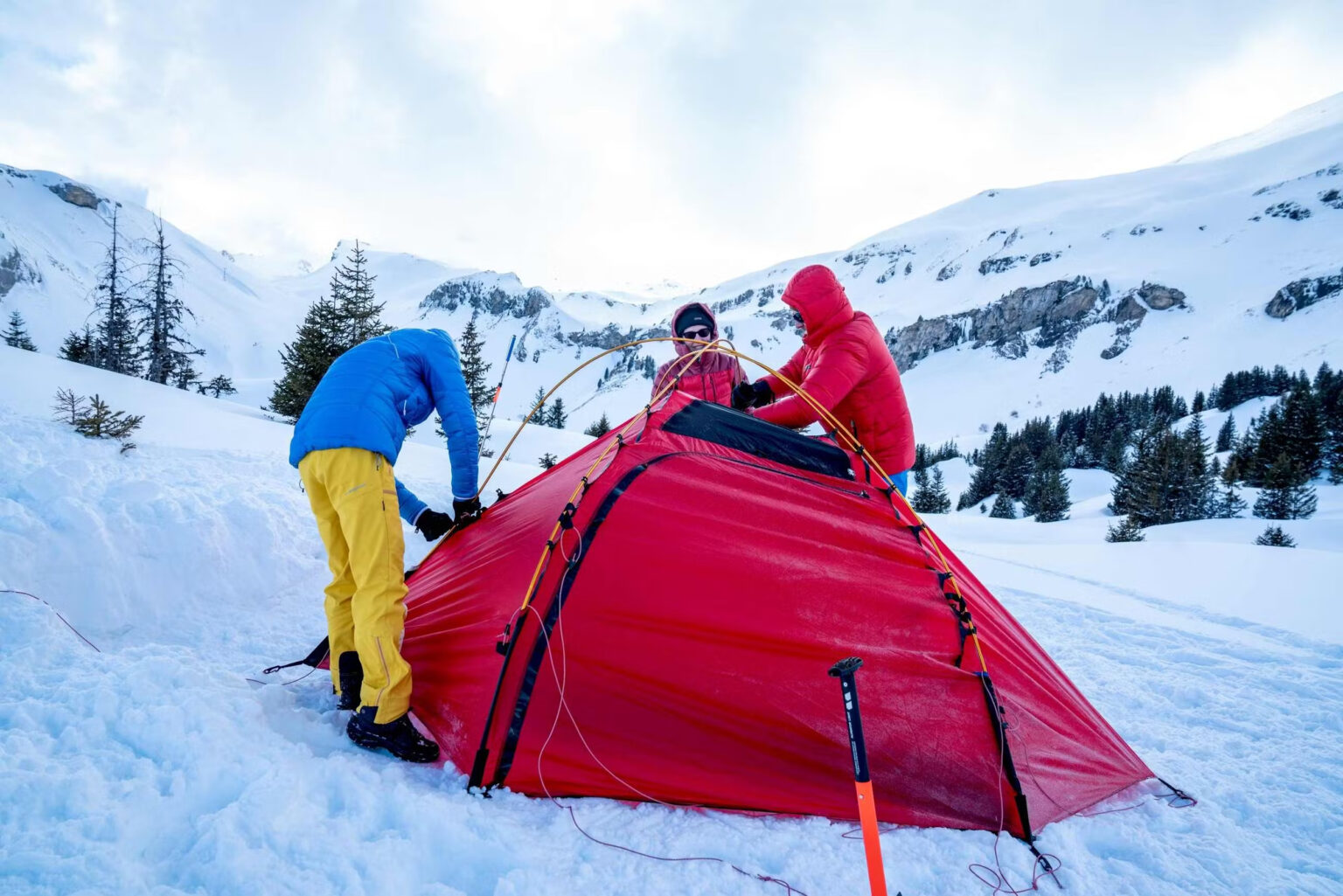The idea of camping in the middle of winter, surrounded by breathtaking snow-covered landscapes, may seem daunting, but with the right techniques and a little preparation, winter bivouacking becomes an unforgettable experience. Whether you're exploring remote peaks or enjoying a wilderness adventure, here are the keys to camping safely and comfortably in the snow.
READ MORE: Our selection of trekking and bivouac tents under 200 euros
1. Choosing the right location
The choice of location is crucial to a successful winter bivouac. Look for an area sheltered from the wind, ideally behind a natural formation such as a hill or trees. Avoid areas exposed to avalanches, snow drifts or under branches laden with falling snow. Once you've found a site, pack down the snow to create a stable, flat surface on which to pitch your tent. This will prevent it sinking during the night and improve thermal insulation.
2. Make sure you're properly equipped
The tent : A four-season tent is essential. It is designed to withstand strong winds, heavy snow and extreme temperatures. Reinforced poles and storm skirts are invaluable assets.
Sleeping bag : Choose a bag suitable for winter temperatures, with down or synthetic fibre insulation. Check the temperature limit and choose a model with a thermal collar to retain heat.

The mattress : Insulation against the cold of the ground is just as important as insulation against the air. An inflatable mattress with a good R-value (at least 4 or more) combined with a foam mattress can provide optimum insulation.
The stove : Choose a liquid-fuel stove, which performs better than gas models at very low temperatures. Don't forget to test your equipment before setting off.
3. Setting up camp in the snow
Dig a shallow trench at the entrance to your tent for your shoes or rucksack. This technique prevents melted snow from accumulating inside. If the wind picks up, build a small wall of snow around the tent to protect it from gusts.
Remember to bury your stakes in the snow for better hold. If conventional stakes aren't enough, use special snow anchors or improvise with branches or bags filled with packed snow.
4. Adopting techniques to keep warm
The cold is one of the greatest challenges of a winter bivouac. To avoid the chills:
- Layer your clothes A breathable layer, an insulating layer and a waterproof layer will keep you warm and dry.
- Eat before you sleep Eat a warm, high-calorie meal to provide your body with the energy it needs to maintain its temperature throughout the night.
- Use an improvised hot water bottle Fill a bottle with hot water and place it in your sleeping bag. It will provide pleasant warmth for several hours.
5. Managing hydration and food
In winter, water can quickly freeze. Keep your bottles inside your rucksack or close to your body to keep them liquid. Melt snow only if you have no other source of water, heating it slowly to avoid damaging your stove.
When it comes to food, opt for easy-to-prepare, high-calorie dishes such as dehydrated soups, energy bars and chocolate. These foods provide quick energy and are easy to transport.
6. Remaining vigilant in the face of danger
Winter camping involves specific risks. Always look out for signs of hypothermia (shivering, confusion, loss of coordination) and keep an eye on the weather forecast to avoid getting caught in a storm. Equip yourself with an avalanche beacon, shovel and probe if you find yourself in a high-risk area.

